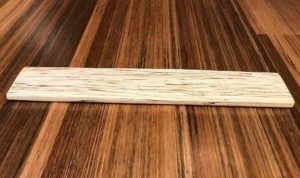Sustainable Building Materials

Synthetic Building Materials
I’m happy to report that 2GreenEnergy’s “cleantech investment opportunity” that focuses on converting toxic waste streams to building products is gaining traction. An investment group is in discussions to acquire it and infuse the capital required to propel it forward.
This company maintains a proven, proprietary process by which it takes solid wastes (coal ash, mine tailings, waste glass, red mud, and incinerator ash) and turns them into profit centers in the form of polymer composites, extruded into high-quality building products (especially roofing shingles) that are structurally superior in strength and stiffness, as well as resistant to fire, weather, mold and termites. The procedure takes about a minute, and the products are ready to ship in an hour.
The business environment for this couldn’t be stronger. There is no direct competition, and there is most definitely a growing concern about the toxicity of some of these waste streams, as well as a huge boom in sustainable building products of all types.
Hemp
I wish I had a horse in this race, but I don’t. From this piece:
Now that it’s legal to grow hemp in the United States, a man who’s spent the last decade developing hemp “hardwood” is building a $6 million factory to manufacture the product en masse.
His patented product called “HempWood” (shown above) is made out of compressed hemp pulp fibers, held together with a soy-based glue. While that may sound like some newfangled version of particle board, it’s not. It looks and feels like oak, but is actually 20 percent harder than the famous hardwood tree.
It also grows 100 times as fast. While it takes an oak tree at least six decades to mature, it takes hemp 6 months.
As I’m fond of saying, We’re getting there. The only question is how much environmental damage we will have done in the process. The answer? Nobody knows.

Craig,
Hmmm,…”The horrific rate of deforestation on this planet is based largely on two industries: beef production and building materials” ?
Say what? Where are these forests being cut down for increased beef production? Although Brazil is recommencing some clear felling of rain-forest, this is largely for sugar production for ethanol manufacture and export to the USA!
The largest destruct of forests is caused by production of ethanol or bio-mass fuels, almost entirely for US and European consumption.
If the US abolished ethanol and the European were no longer reliant of Bio-mass from Russia, the rate of forest destruction would not only slow, but reverse.
Manufacturing “timber substitutes’ from waste products isn’t really very new and in some cases can be environmentally detrimental.
Wood for flooring paneling and non-load bearing uses has been made from bamboo, jute and other fibrous plants for thousands of years.
The uses in industrial products are numerous, often as composites with other materials.
Hemp production is not quite as environmentally positive as advocates claim.
Like any crop, Hemp when grown as a commercial mono-culture needs a lot of water. William Vizuete, associate Professor at the University of North Carolina’s Gillings School of Public Health, developed an air quality model to monitor how commercial hemp and cannabis cultivation affects the atmosphere.
Prof. Vizuette’s research revealed large scale hemp and cannabis cultivation produces volatile organic compounds or VOCs including increased harmful pollutants that impact the ozone layer.
The EPA warns of the increased water demands created by large scale hemp or cannabis production and cautioned about the pollutant effect of “artificial’ wood products as the compounds begin to deteriorate and the toxins are released.
For industrial purposes, Jute is a superior crop to hemp, using on 5% of the water requirement and causing less environmental damage.
I have two investments in successful bamboo cultivation and processing into various wood substitutes.
I wish anyone well in producing more sustainable products from waste or less harmful cultivation. R&D into such products is always worthwhile and should be encouraged, however all claims and products should be carefully analyzed and monitored to prevent overly optimistic claims and the resultant disasters.
No one wants to create another Ethanol disaster.